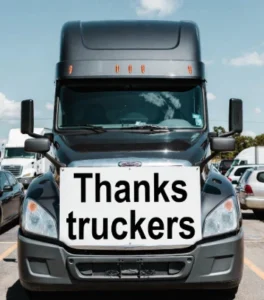The Starship 3.0 is a Class 8 truck that demonstrates that maximum efficiency doesn’t always require reinventing the wheel, but rather adapting existing technology.
Shell has taken a significant step forward in freight transportation with its Starship 3.0, a Class 8 truck that shows that achieving high efficiency doesn’t necessarily mean starting from scratch; it can be about adapting available technology. This initiative, launched in 2018 and now in its third generation, aims to enhance sustainability in the transportation industry.
Since its first version, which achieved 8.94 miles per gallon (mpg) while carrying 39,000 pounds over 2,300 miles, the Starship has evolved significantly. With the Starship 3.0, Shell has reached outstanding efficiency, achieving 9 mpg while transporting the maximum load of 80,000 pounds. This translates to 2,542 times more efficiency in tons of cargo per gallon and 3.23 times more in tons of cargo per kg of CO2e emitted. The Starship 3.0 could be the most efficient Class 8 truck currently available; let’s explore what makes it so special.

Technological innovations: what makes Starship 3.0 special?
The most notable difference in the Starship 3.0 is its propulsion system. Unlike its predecessors that used diesel engines, this model is equipped with a Cummins X15N natural gas engine. This choice was strategic, as natural gas allows fleets to adopt cleaner technologies without waiting for still-developing infrastructure, such as hydrogen. In other words, it not only enhances efficiency but also meets new requirements for more environmentally friendly vehicles, even if natural gas engines may be less fuel-efficient.
On the other side, the most striking difference between a traditional Class 8 truck and the Starship 3.0 is its distinctive appearance. Additionally, the Starship 3.0 features a lightweight and aerodynamic design. The cabin, made from carbon fiber, boasts curved edges and a sloped hood, which improves fuel efficiency. Coupled with ultra-wide low-rolling-resistance rear tires developed in collaboration with Bridgestone, these design elements contribute to its performance.

“Laboratory on Wheels”
Serving as a “laboratory on wheels,“ as industry experts have labeled it, the Starship 3.0 enables Shell to test and demonstrate technologies that can be implemented in current industry trucks. The absence of traditional comfort features in its interior has maximized space and optimized design.
The use of cameras instead of traditional mirrors also contributes to its aerodynamics, further enhancing efficiency. Despite these innovations, it has been noted that the driving experience is comparable to that of other Class 8 trucks. However, Shell continues to work on delivering the best possible version of the Starship.
The Shell Starship initiative, particularly the Starship 3.0, illustrates that a complete overhaul of the industry is not necessary to improve efficiency and reduce carbon emissions. Instead, the adaptation and integration of existing technologies can pave the way for a more sustainable future in freight transportation. The question remains whether the sector is truly ready to implement these changes and whether policies will align with the needs of the market and drivers.

The strangest Black Friday purchases: from funny to nothing
Fueled by the adrenaline of the moment and the excitement of scoring big discounts, many shoppers have ended up buying unusual items during Black Friday.

Young drivers wanted, older drivers needed: the industry’s biggest dilemma
The road transportation industry remains at a crossroads in its efforts to recruit young drivers, but the workforce keeps aging and seeking retirement. The road

Thanksgiving, Black Friday and the Long Weekend: America Moves Because Trucks Never Stop
Thanksgiving, Black Friday and the Long Weekend: America Moves Because Trucks Never Stop

Thankful for the Drivers Who Keep America Moving This Thanksgiving
Thankful for the Drivers Who Keep America Moving: The Invisible Work Behind One of the Busiest Thanksgiving Seasons

Preparing for Thanksgiving travel: best and worst times to travel
Whether you are a truck driver, a traveler, or simply someone who needs to move around during these days, we share essential information to help

Cargo theft spikes during Thanksgiving: how to stay safe
Every year during Thanksgiving, cargo theft poses a serious threat to the trucking industry, and this year will be no exception. Every year during Thanksgiving,
